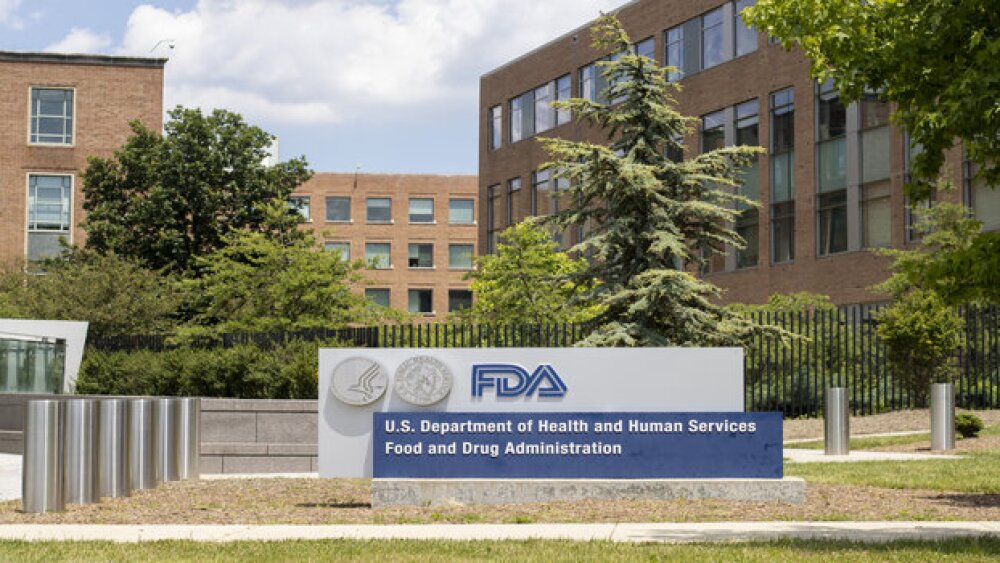MARLBOROUGH, Mass.--(BUSINESS WIRE)--Sepracor Inc. (Nasdaq: SEPR - News) announced today the results of a large-scale, 707-patient Phase III study of OMNARIS® (ciclesonide) HFA, an aerosol nasal formulation of ciclesonide, for the treatment of seasonal allergic rhinitis (SAR) in adult and adolescent patients. In this study, OMNARIS HFA met its primary efficacy endpoint by demonstrating a statistically significant reduction in the 24-hour reflective total nasal symptom score (TNSS), which assesses the common allergy symptoms of nasal congestion, itching, sneezing and runny nose, versus placebo. In addition, OMNARIS HFA statistically significantly met its key secondary endpoints of improvement in the 24-hour instantaneous TNSS and the 24-hour reflective total ocular symptom score (TOSS) versus placebo. Ocular symptoms, which can include itching, tearing and redness of the eyes, can be particularly troublesome and are present in a large number of patients with SAR.
“We are very excited about these preliminary Phase III results since OMNARIS HFA is a differentiated asset with the potential to become a significant growth product for Sepracor. We are developing OMNARIS in a novel, HFA metered-dose device that we believe is a first-in-class delivery system for the treatment of allergic rhinitis,” said Adrian Adams, President and Chief Executive Officer of Sepracor. “This late-stage clinical candidate represents another planned step forward in our near- and mid-term corporate objectives of expanding and advancing our pharmaceutical product pipeline towards creating shareholder value over time.”
OMNARIS HFA and OMNARIS Nasal Spray both represent a potential improvement in delivery systems that may be able to reduce post-nasal drip and back-of-the-throat run-off associated with some intranasal aqueous-based corticosteroids for the treatment of allergic rhinitis. The HFA device is designed to deliver a fine, dry mist of medication, administered by a metered-dose device, to a patient’s nose. The Allergies in America Survey, published in 2006, reports that approximately 33% of respondents find "dripping down the throat" to be moderately or extremely bothersome, and approximately 25% of respondents have discontinued use of a nasal allergy prescription due to bothersome side effects.
Ciclesonide is the active ingredient in OMNARIS HFA as well as OMNARIS Nasal Spray, which is a product approved by the U.S. Food and Drug Administration (FDA) that is indicated for the treatment of nasal symptoms associated with seasonal and perennial allergic rhinitis. Sepracor launched OMNARIS Nasal Spray in April 2008. Intranasal corticosteroids, such as OMNARIS Nasal Spray, are well accepted as first-line therapy for the treatment of allergic rhinitis. Ciclesonide is developed, marketed and commercialized by Sepracor in the U.S. under an exclusive distribution agreement with Nycomed GmbH (Nycomed).
“We are encouraged by these study results and plan to initiate a Phase III perennial allergic rhinitis study this year,” said Mark H.N. Corrigan, M.D., Executive Vice President, Research and Development at Sepracor. “HFA formulations that deliver medication for the treatment of nasal allergies are currently not available. We are excited about the potential for OMNARIS HFA and believe that patients may benefit from this new delivery system. When chlorofluorocarbon (CFC) nasal sprays for allergic rhinitis were available, they constituted an important treatment option for patients and physicians, and an HFA formulation could therefore contribute to improved patient comfort and increased compliance.”
In accordance with the provisions of the Montreal Protocol on Substances that Deplete the Ozone Layer, and codified by the United States Congress into law in Title VI of the Clean Air Act, the production, importation, and consumption of CFCs used in aerosol-spray propellants in products for the treatment of allergic rhinitis in the U.S. were banned as of January 1, 1996.
About the Study
* 707 adult and adolescent patients at least 13 years of age with a history of SAR were randomized in a double-blind manner to receive ciclesonide HFA nasal aerosol 80 mcg or 160 mcg, or placebo once daily for up to two weeks. * Efficacy was assessed by patient-reported average morning and evening reflective and instantaneous TNSS and TOSS. The TNSS assesses the common allergy symptoms of nasal congestion, itching, sneezing and runny nose. The TOSS assesses ocular symptoms such as itching, tearing and redness of the eyes. The safety and tolerability of ciclesonide were also assessed in the trial. * Both active treatments showed clinically meaningful and statistically significant differences in reflective TNSS compared with placebo over the two-week treatment period (p<0.0001). * Similarly, both active treatments also showed clinically meaningful and statistically significant differences in both instantaneous TNSS and reflective TOSS compared with placebo over the two-week treatment period (p<0.0001 and p<0.001,respectively). * The drug was well tolerated, and the safety profile was similar across all of the treatment groups.
About Allergic Rhinitis
Allergic rhinitis, which is commonly referred to as hay fever, is a collection of symptoms, predominantly in the nose and eyes, to allergens such as dust, dander and pollen. The sensitized immune system produces antibodies to these allergens, which cause chemicals called histamines to be released into the bloodstream, causing itching, swelling of affected tissues, mucus production, hives, rashes and other symptoms. Symptoms vary in severity from person to person.2
Allergic rhinitis is the most common allergic disease in the U.S. and is believed to affect 20 percent of all adults and up to 40 percent of children. Approximately 16.7 million physician office visits each year are attributed to allergic rhinitis. Allergic rhinitis and asthma are the two leading causes of absenteeism due to chronic illness.3
SAR, which is also often referred to as hay fever, is caused by an allergy to the pollen of trees, grasses, weeds or mold spores. Depending on the allergen, the section of the country and the pollination periods, SAR may occur in the spring, summer or fall and may last until the first frost.
Some people have symptoms of rhinitis no matter what the season. This is referred to as perennial allergic rhinitis, and it can be caused by allergens such as animal dander, indoor mold, dust mites and cockroaches.4
About Sepracor
Sepracor Inc. is a research-based pharmaceutical company dedicated to treating and preventing human disease by discovering, developing and commercializing innovative pharmaceutical products that are directed toward serving large and growing markets and unmet medical needs. Sepracor's drug development program has yielded a portfolio of pharmaceutical products and candidates with a focus on respiratory and central nervous system disorders. Currently marketed products include LUNESTA® brand eszopiclone, XOPENEX® brand levalbuterol HCl Inhalation Solution, XOPENEX HFA® brand levalbuterol tartrate Inhalation Aerosol, BROVANA® brand arformoterol tartrate Inhalation Solution, OMNARIS® brand ciclesonide Nasal Spray and ALVESCO® brand ciclesonide HFA Inhalation Aerosol. Sepracor's corporate headquarters are located in Marlborough, Massachusetts.
Forward-Looking Statement
This news release contains forward-looking statements that involve risks and uncertainties, including statements with respect to the safety, efficacy, potential benefits, possible uses and commercial success of OMNARIS products; OMNARIS HFA having the potential to become a significant growth product for Sepracor; the potential for OMNARIS HFA to become a first-in-class delivery system for the treatment of allergic rhinitis; the initiation of a Phase III perennial allergic rhinitis study for OMNARIS HFA this year; and an HFA formulation of a nasal spray for the treatment of allergic rhinitis potentially contributing to improved patient comfort and increased compliance. Among the factors that could cause actual results to differ materially from those indicated by such forward-looking statements are: the clinical benefits, efficacy and safety of products containing ciclesonide; the timing and success of the development of OMNARIS HFA; unexpected delays in commercial introduction and the commercial success of OMNARIS HFA; the ability of Nycomed to supply or obtain from third parties Sepracor's requirements for products or components covered by Sepracor’s exclusive distribution and development agreement with Nycomed; the success of Sepracor's alliance with Nycomed; the scope of Nycomed’s and/or Sepracor’s patents and the patents of others; the ability of Sepracor to attract and retain qualified personnel; and certain other factors that may affect future operating results that are detailed in Sepracor’s annual report on Form 10-K for the year ended December 31, 2008 filed with the Securities and Exchange Commission.
In addition, the statements in this press release represent Sepracor's expectations and beliefs as of the date of this press release. Sepracor anticipates that subsequent events and developments may cause these expectations and beliefs to change. However, while Sepracor may elect to update these forward-looking statements at some point in the future, it specifically disclaims any obligation to do so. These forward-looking statements should not be relied upon as representing Sepracor's expectations or beliefs as of any date subsequent to the date of this press release.
1IMS Health, moving average total for nasal corticosteroids as of February 2009.
2Medicine Plus, a service of the U.S. National Library of Medicine and the National Institutes of Health. [Internet]. Available from: http://www.nlm.nih.gov/medlineplus/ency/imagepages/19319.htm. Accessed: April 15, 2009.
3American Academy of Allergy, Asthma and Immunology (AAAAI). [Internet]. Available from http://www.aaaai.org/media/resources/media_kit/allergy_statistics.stm. Accessed April 15, 2009.
4American Academy of Allergy, Asthma and Immunology (AAAAI). [Internet]. Available from: http://www.aaaai.org/patients/gallery/rhinitissinusitis.asp. Accessed April 15, 2009.
LUNESTA, XOPENEX, XOPENEX HFA and BROVANA are registered trademarks of Sepracor Inc. OMNARIS and ALVESCO are registered trademarks of Nycomed GmbH.
For a copy of this release or any recent release, visit Sepracor’s web site at www.sepracor.com.
Contact:
Sepracor Inc. Jonaé R. Barnes, 508-481-6700 Sr. Vice President, Investor Relations and Corporate Communications




